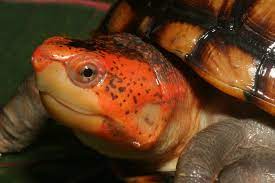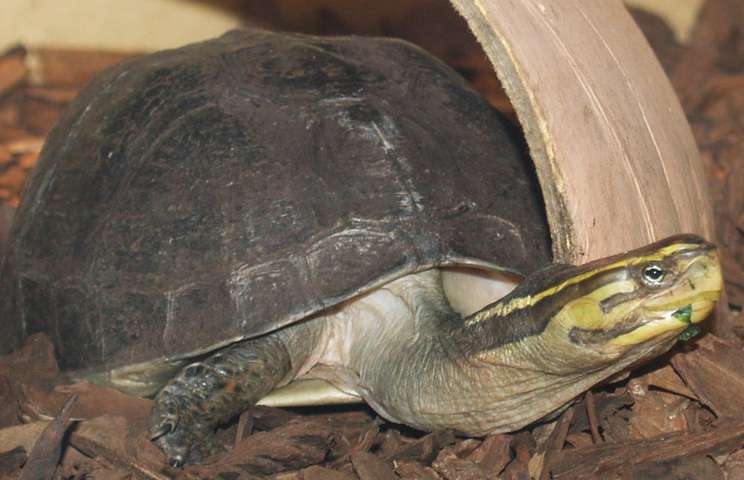
A subspecies of the Scorpion Mud turtle, Red-cheeked Mud turtles can be found all across South America. Lakes and rivers with sandy or silty bottoms are preferred by them. They frequently float at the water’s surface or just below it while they enjoy the sun.
On their faces, which are also a characteristic orange and red tint, there are black patches. The Red-cheeked Mud turtle is a carnivorous species that eats amphibians, crabs, insects, mollusks, and worms.
Care as a Pet

Housing
The habitat of the Red-cheeked Mud turtle is warmer lakes and rivers with silty or sandy bottoms. The majority of their time will be spent underwater, but they will periodically surface to bask. The majority of South America is home to red-cheeked turtles as their native species. They are mostly found in Mexico, El Salvador, Guatemala, Honduras, and Honduras’ southernmost regions.
Red-cheeked mud turtles require an environment that is mostly made up of water, much like other mud turtle species do. A tank as big as 75 gallons is needed for an adult who is fully matured. Because Red-cheeked Mud turtles like slightly warmer waters, an aquarium arrangement is a perfect choice. You might also keep your Red-cheeked Mud turtle in a warm-water pond outside. In contrast, you should keep your turtle indoors throughout the winter if your pond is prone to freeze.
Heat
Red-cheeked Mud turtles require water that is kept between 74 and 78 degrees Fahrenheit. Use an aquarium-safe thermometer to keep track of this. Use a heat lamp to maintain the basking area of your Red-cheeked Mud turtle at a temperature of roughly 77 degrees Fahrenheit. Both the aquatic and the terrestrial portions of the basking area are true of this. For your Red-cheeked Mud turtle, you must additionally offer UVB in addition to the basking light. Your turtle will benefit from getting the proper quantity of vitamins and nutrients, including Vitamin D3, that it would get from sunbathing.
Feed
Red-cheeked turtle care must be taken to control mud turtles’ feeding because they are ferocious carnivores. Using a selection of commercial turtle pellets is a fantastic idea. Additionally, you may periodically chop strips of meat and fish, as well as mollusks, earthworms, and fish. Adults should only receive food once daily, up to the amount they can finish in around 15 minutes. Three times every week, sprinkle a multivitamin supplement on their food, and once a week, sprinkle calcium on their diet.
Table






